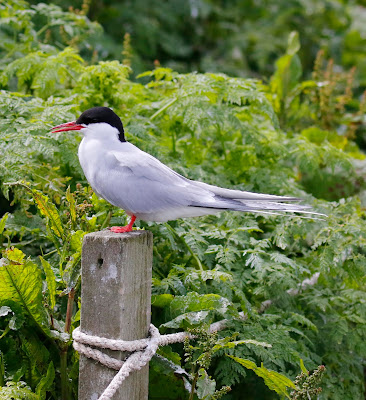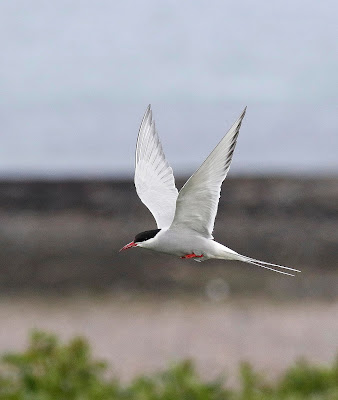Today promised to be the hottest day of the year so far, as a heatwave sweeps up from France to encompass the whole of Great Britain. Starved of sunshine and the opportunity to go butterflying for so long I determined that today I would go in search of another of our native hairstreak butterflies - the White Letter Hairstreak.
This hairstreak is generally accepted as being both elusive and rare. It is entirely dependent on Elm trees and since the onset of Dutch Elm Disease its numbers have crashed but it is now making a recovery as it has adapted to colonizing the elm suckers that grow from the diseased root stock until they reach the age where they too succumb to the disease. Although there is now less concern about its situation it is still a species in a worrying long term decline. A familiar and depressing story concerning most of our native butterflies
However it may not be so rare as first thought. There must be many areas of small elms that go unchecked or un-noticed and it requires a great deal of patience and determination to wait under elms to see if there is any indication of their presence. So possibly this butterfly may be more numerous than is currently thought
Elusive it certainly is, as the adult hairstreaks tend to spend most of their brief lives up in the tops of the elms imbibing honeydew from the leaves and are consequently hard to see. The tiny butterfly mates and lays its eggs in the elms and the larvae feed on the buds, flowers and leaves of the elm. Sometimes you can see the adults jinking in erratic flight above the elms as males tussle with each other.
Elusive it certainly is, as the adult hairstreaks tend to spend most of their brief lives up in the tops of the elms imbibing honeydew from the leaves and are consequently hard to see. The tiny butterfly mates and lays its eggs in the elms and the larvae feed on the buds, flowers and leaves of the elm. Sometimes you can see the adults jinking in erratic flight above the elms as males tussle with each other.
For those like me who wish to see one close up there is one ray of hope. They will come down to bramble flowers to nectar and this is the opportunity to see and photograph them, often just a foot or so away. A certain place at Chazey Heath, Oxfordshire is the place for me, as there a row of small elms grow on one side of a sunken lane whilst on the other side is a dense mixed hedge bestrewn with bramble. At this time of year the brambles have come into an abundance of emergent pink flowers and whiter older flowers.
 |
| The lane, elms and bramble hedge |
 |
| The bramble flowers where I found the White letter Hairstreak |
I was in two states of mind now. Pleased I had at least seen one but definitely eager for more prolonged views. Half an hour passed with nothing to get my pulse racing but then another small flicker of brown, so insignificant it could just as easily be missed, indicated another hairstreak had arrived and it landed further down the hedge. I approached and like the other one it was sunning itself on a leaf but it was restless and it too departed in less than a minute.
Deflated I determined to give it another half an hour and wandered the short length of the bramble hedge checking each and every flower. Nothing. I walked back down the short length of hedge Again nothing.
I stood half way along the hedge so I could cover any hairstreak's arrival from the nearby elms but there was no sign of one.
Then I saw it. A minute brown triangle, bringing me deep joy, for I had found a hairstreak nectaring on a bramble flower right on the edge of the hedge and at head height. Perfect for viewing and photography. How did it slip my notice?
It systematically covered each stamen of the flower, its tiny legs moving it, as if invisibly, across the flower. Up, down, around and under the flower, it checked every angle for nectar before walking on tiny steps to another adjacent flower on the bramble spike.
It systematically covered each stamen of the flower, its tiny legs moving it, as if invisibly, across the flower. Up, down, around and under the flower, it checked every angle for nectar before walking on tiny steps to another adjacent flower on the bramble spike.
It fluttered from a flower to a leaf and hung there for a minute or two, then fluttered back to a flower.
It seemed dissatisfied with the flowers and flew onto another leaf where it systematically crossed back and fore over the leaf sucking up honeydew with its proboscis. Maybe it fancied a change of diet from bramble flower nectar. Who knows? I watched as it became still and sat content on its partly shaded leaf. More than half an hour had passed since I first encountered it.
It seemed dissatisfied with the flowers and flew onto another leaf where it systematically crossed back and fore over the leaf sucking up honeydew with its proboscis. Maybe it fancied a change of diet from bramble flower nectar. Who knows? I watched as it became still and sat content on its partly shaded leaf. More than half an hour had passed since I first encountered it.
I was reluctant to leave as these rare encounters are to be treasured but I had an appointment elsewhere.The sun was hot now but a pleasant warm breeze kept the worst of the heat in abeyance.
A wonderfully rewarding experience on this glorious summer's day






















































